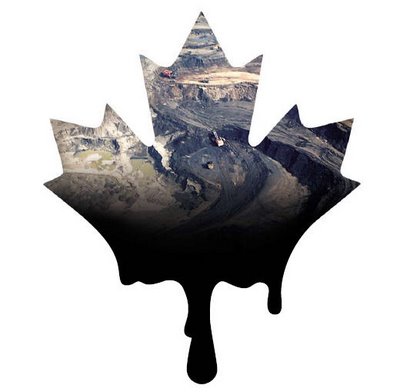 Canada’s tar sands lobby is getting desperate, clutching at straws as to how to revitalise the flagging industry that is being squeezed by a stagnant oil price and looming carbon regulations.
Canada’s tar sands lobby is getting desperate, clutching at straws as to how to revitalise the flagging industry that is being squeezed by a stagnant oil price and looming carbon regulations.
They will use any excuse to try and spin their case. Take the report earlier this week by the International Energy Agency, that actually said that demand would stay fairly stagnant.
But the Montreal Gazette trumpeted: “The world needs Canada’s so-called dirty oil, the International Energy Agency said yesterday.”
Not so argues Lorne Stockman, who is making his name as a critical oil analyst producing a series of decisive reports for NGOs like Greenpeace.
“‘Necessity’ is in the eye of the beholder” argues Stockman, “ the world does not ‘need’ tar sands oil and the IEA World Energy Outlook does not ‘necessarily’ say that it does.”
The following is from a briefing paper that Stockman has just written:
“Certain members of the Canadian press have pounced upon selected statements in the International Energy Agency’s (IEA) World Energy Outlook, that despite its intense environmental impact, the world simply needs its oil and will have to put up with the consequences. This depends on which parts of the report you choose to read and how you interpret the caveats and assumptions that all forecasts of economic activity are inevitably accompanied with.”
Our need to address climate change is working against the tar sands industry: He points out that: “The scenario under which the IEA claims that there will be a large growth in oil sands production is its reference scenario, i.e. business as usual with no attempt to address climate change. In this scenario oil demand rises to over 105mb/d in 2030, greenhouse gases rise inexorably, the world fails to control carbon in the atmosphere at 450ppm and sets itself on a course for an average rise in global temperatures of 6°C.”
Anyone who follows climate science will know that a 6°C rise means complete catastrophic warming.
The carbon price is working against the industry. “In fact” argues Stockman “the IEA urges government and industry to invest billions of dollars to constrain carbon to the 450ppm level. It says that in order to do so fossil fuel consumption must peak by 2020, the price of carbon in industrialised countries (that does include Canada by the way) must reach $50 a tonne in 2020 and rise to $110 by 2030.”
With a price like this, tar sands will struggle.
“The IEA report says that tar sands production must overcome a number of challenges to become economic again. But it is far from certain that these challenges can be overcome and the world has very little real interest in this happening. It is in the world’s interest to develop cheap, reliable and clean energy resources and the tar sands do not fit that criteria.
The current oil price is working against the industry. “What is clear is that the expense of constructing and operating tar sands projects is such that when the economy is straining it is tar sands projects that are primarily threatened by an accompanying decline in oil demand and price.”
In conclusion, argues Stockman, “The IEA World Energy Outlook does not state that the world needs tar sands oil to prevent an oil supply crisis. What it actually states is that a significant growth in tar sands production will require the industry to overcome a number of cost barriers.”
“Those cost barriers are very significant and the debate is less about whether costs can come down and rather whether the global economy can tolerate the high oil prices needed over the long term to enable tar sands growth.”
“The more pertinent conclusions of the IEA report are that in order to stabilize the world’s climate, oil consumption must be constrained at levels that suggest very little growth above current levels. At that level of demand, serious questions must be asked about whether growing tar sands production will be economically viable.
“A more viable answer to the depletion of non-OPEC supply would appear to be more aggressive policies to reduce demand. This has the twin benefit of addressing environmental concerns and enhancing energy security.”
You won’t see this in the Montreal Gazette…
